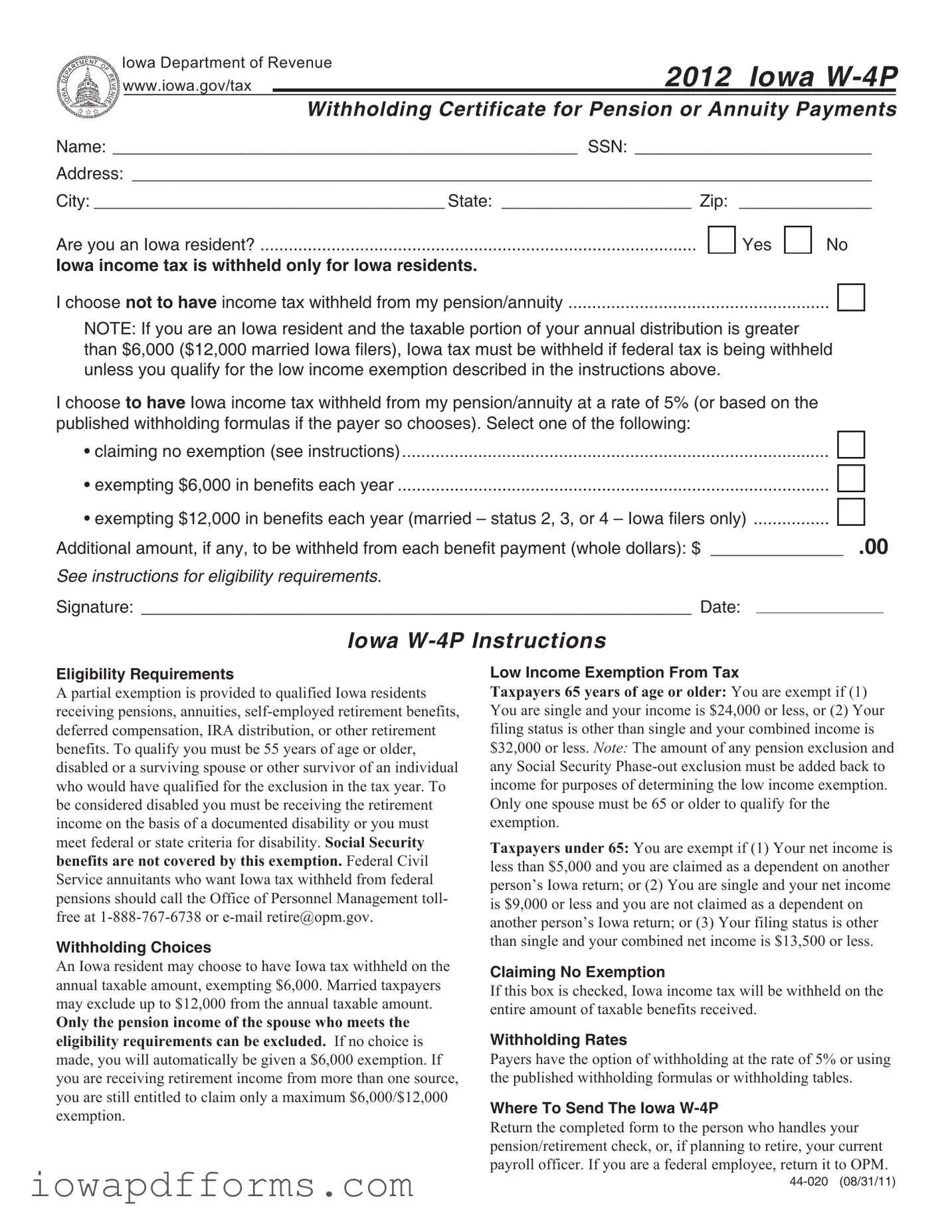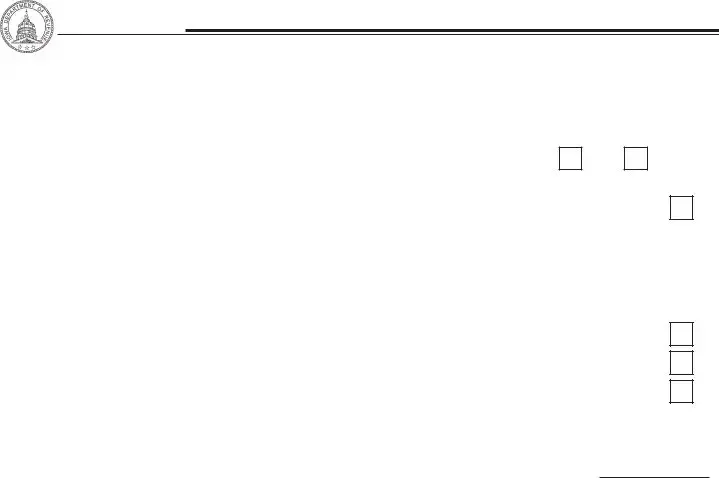The Iowa W-4P form shares similarities with the Federal W-4 form. Both documents serve as withholding certificates for income tax purposes. While the Iowa W-4P focuses specifically on pension and annuity payments, the Federal W-4 is applicable to wages and salaries. Each form allows individuals to indicate their preferences for withholding amounts, ensuring that the correct amount of tax is deducted from their payments. Additionally, both forms require the taxpayer's personal information, such as name and Social Security number, to facilitate accurate processing.
Another document akin to the Iowa W-4P is the state-specific withholding form, such as the California DE 4. Like the W-4P, the DE 4 is designed to help taxpayers manage their state income tax withholding. Both forms enable individuals to claim exemptions or specify withholding amounts based on their unique financial situations. The DE 4, however, is tailored for California residents and addresses state-specific tax laws, whereas the W-4P is specific to Iowa pension and annuity payments.
The 1099-R form is also similar to the Iowa W-4P. This form is used to report distributions from pensions, annuities, retirement plans, and other sources. While the W-4P allows individuals to specify their withholding preferences for these distributions, the 1099-R serves as a summary of the income received and the taxes withheld during the tax year. Both documents are crucial for taxpayers to understand their tax obligations and ensure compliance with federal and state tax laws.
When navigating the financial landscape, it's crucial to understand the importance of documentation like the Promissory Note, as it clarifies repayment terms and protects both lender and borrower interests. For those in Alabama, creating a Promissory Note can be easily accomplished by utilizing available resources. To get started on your own Promissory Note, visit https://promissoryform.com/ for a straightforward form that addresses your needs.
The IRS Form 1040, specifically the section for reporting pension and annuity income, is another document that relates to the Iowa W-4P. The 1040 is the primary tax return form for individuals in the United States. It requires taxpayers to report all income, including pension and annuity payments, which are influenced by the withholding decisions made on the W-4P. Thus, the W-4P helps determine the amount of tax withheld, while the 1040 captures the total income and tax liability for the year.
Lastly, the Iowa 1040 form is relevant to the W-4P as it is the state income tax return for Iowa residents. Similar to the federal 1040, the Iowa 1040 requires individuals to report their income, including pensions and annuities. The information provided on the W-4P regarding withholding preferences directly impacts the amounts reported on the Iowa 1040, making both documents essential for accurate tax reporting and compliance for Iowa taxpayers.

